7 Ideas for the First Day of School in Spanish Class
… and a few un-ideas as well
Below I outline 7 activities that are a must for me within the first 2-3 days of Spanish class. I have also taken time to honestly reflect on a few things that I have done in the past because I felt like I was “supposed” to do them… but don’t plan on doing in the future. This could be because they felt forced, or like I was just grasping at ideas to fill the time with my new students.
I hope you can get a few ideas to make your first day or week with your Spanish students less stressful and more meaningful. And at the same time, maybe the un-ideas will help you feel powerful enough to choose what works for you, instead of feeling like you are “supposed” to do things just because they work for someone else.
I will say that this post is written for a typical in-person learning environment. To read my adjustments for a hybrid or remote setting, see this post.
Routines for the first day:
1) Greeting at the door
I try to greet my students at the door every single day. I’m not perfect in this routine by any means; sometimes I’m scrambling to change the warm-up on the board, and sometimes I have to run to use the restroom because I am about to start my 4th class in a row. But in general and absolutely on the FIRST day, I am there. I think it is so important to greet your students on the first day. I smile, welcome them, and ask for their name. I will probably ask their name 10 more times over the next week, but that’s OK. I want them to enter my room having met me already. I don’t want them to enter, looking around, wondering what I will be like. Will I be kind? Will I ever smile? By greeting them before they can even feel nervous, I’ve hopefully built a little bit of trust from the start.
To save time on the first few days, I will have my attendance sheet out there with me. That way, I can find their names and check them in so that I don’t have to do that again once I am in the room. I know that every minute counts, especially during the first week which always seems to fly by.
I know it isn’t the easiest routine to implement, but please try it! You might be surprised at how it makes you feel.

2) Assigned seats:
I do still give assigned seats, even in high school. My students sometimes act surprised by this, but part of that is the “Oh, you’re the onlyyyyyyyy teacherrrrrrrrr that does thissssssss” charade. Sweethearts, please. Sit down. No not there… in your seat. Thank you 😉
After I greet students at the door, I think it’s a valuable use of our time on that first day to spend 5 minutes explaining their assigned seats. I create my seating diagrams ahead of time and I quickly walk around the room announcing who sits where. I should mention that my students sit in groups of 4-5 desks around the room. After trying a few different seating arrangements in the first few years, I decided that without a doubt small groups work best for me and my students for many reasons.
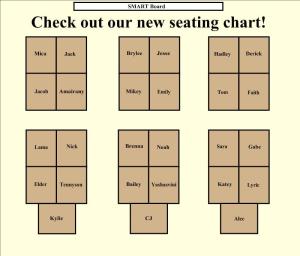
This is the best example I could find of a similar seating chart to what I follow. I love that students work together, and that I am not the center of the attention (like I was when I had the double U shape.)
To read more about why I love this arrangement, check out this post.
I make the seating chart before I meet them, and it lasts for the first quarter. The only request I take after day 1 is “If anyone feels they cannot pay attention in or see from their seat for any reason, please see me quietly after class.”
If I notice at any point during Q1 that certain students aren’t working well together, then we move. If students are rude/disrespectful to me or to one another, we move. Easy. I assign new seats for Q2 and Q3…. but on day 1 I explain that if a class overall does well in their seats and with their groups during the year…. THEY get to choose their seats during Q4. I have never had an issue with this, and it is a nice reward at the end of the year. It’s also a great thing to *mention* throughout the year if someone is complaining about their seat. “Well, during Q4 as long as you remain respectful now, you’ll get to choose to sit wherever you’d like!”
We do generally move around the room very often during any given day. There is always opportunity for my students to work with someone of their choosing, in addition to time with their small groups. To maintain a steady environment throughout this movement, I gently remind students: “If I ever have to move you from working with a certain person, you may never get to choose that seat/partner again. So please be mindful of that. I trust you to choose a productive working space for yourself.”
3) Taco Tuesday:
If you know me, it’s no surprise that Taco Tuesday finds it’s way into my Day 1 plans every year. I have an entire blog post on the different ways I use this game here, but on Day 1 it’s fairly simple! You decide whether you will play on paper, or take advantage of my digital gameplay options.
I have a cognates/common words game board that I use with my Spanish 1s on the VERY first day. This is to avoid the “I don’t speak Spanish!” “I don’t know any Spanish!” jitters.
The ease of this game (and a little competition of course) gets them excited and confident that they DO know what they are doing, they DO know more than they thought, and that they WILL have fun learning in this class.
This is an activity that engages students of all grades and class levels. I love the community building that takes place, the friendships that form, and the competition and laughter. There are so many reasons to love Taco Tuesday!
For the upper levels, I have made specific game boards that review our curriculum from the previous year. I also designed back to school game boards for Spanish 2, Spanish 3, and Spanish 4.
If you want to customize your own Taco Tuesday games, I have a set of templates here that include various editable game board sizes.
All of my Taco Tuesday games have been updated for digital gameplay. In each download, you will be able to choose whether you’d like to print and play, or have your students play on their devices.
The digital game pieces are included and easy to move! 🙂 I hope your students love this update!
Want to try this digital game for free? Get Access below!
Students come to class every year saying “I don’t remember ANYTHING” from last year! 15 minutes of this game erases that feeling, and they are jumping out of their seats to prove that they DO remember their content.
For all levels, this is perfectly placed before our brainstorming session on the very first day of class (see #4), but we play all year long!
P.S. if you know and love a French teacher… introduce them to Macaron Mardi!
4) Class Brainstorm / Overview:
I don’t like getting too much into routines and expectations on the first day, because I feel that students get overwhelmed easily. I do give a brief introduction about myself, my teaching strategies and my expectations, but I feel that talking too much on the first day leads to valuable time being essentially wasted. (No offense.) I’ll talk more about that in my “un-ideas” below. For now, here is what I do instead.
I will write in the center of the board “¿Qué vamos a aprender este año?” and I ask students to come up and write any answer/guesses/hopes they have. I ask them to write all over the board, surrounding my question I motivate them to write either in English (especially in Spanish 1) or Spanish. I will then circle any correct topics, and fill in the main topics that will be covered that they missed. Students like to know what they will actually learn in a class! As much as they act reluctant… they want to learn. They want to know why a class will be valuable to them.
For the upper levels, I actually have a first board before this discussion that says “¿Qué estudiamos el año pasado?” where I ask them to remember the topics/themes they studied last year. We then compare that to what we will be learning this year. Playing Taco Tuesday before this part helps, so that I’m not left with blank stares and the “I don’t remember anything” line 🙂
If students have said they want to learn something that we didn’t write on the board, I talk about maybe adding a mini lesson or a cultural discussion on that topic. And I really do come back to this conversation! I find that having this discussion for 10-15 minutes helps give students an idea of the plan for the year, without leaving them overwhelmed and feeling overburdened with rules and expectations. It keeps them involved in the process and makes them feel like they have a say right from the start.
if there is time…
The first day usually goes by way faster than expected, but if there is time these are the activities I always have at the ready on the very first day.
5) Latinoamérica by Calle 13:
This song is simply amazing. The video is stunning as well. It works well in all levels, but I especially try to use it in Spanish 1 to get the cultural conversation going from the very first days of class.
This song can be used ON DAY 1 to:
- discuss the importance of learning a foreign language
- identify cognates // discuss importance
- evaluate cultural assumptions and stereotypes
- discuss historical/cultural events
- research further into cultural traditions
I could talk about how and why I use this song specifically for hours, but for now I will just link my activities so you can take a peek for yourself. Please give it a listen and decide if you think it would work with your students 🙂
6) Letra Personal (option for upper levels):
The song above can absolutely be used in upper levels. I know for a fact it is used in college courses, because I personally studied it during my Master’s program. I even include complex quotes in my activities for students to dive into // research. However, if you’re looking for another idea for upper levels you can’t go wrong with a hands-on activity. I have students decorate our room throughout the year… so why not start that right from week 1! They use colorful paper to cut out the first letter of their name, and fill their letter with important information about their lives. For example, my name is Erin. So I would cut out a large E, and fill my E with information/drawings that answer the questions my teacher gave me.
You can differentiate the included information based on the level of the class. I typically give 10 questions for students to answer. Sometimes this turns into a larger assignment and becomes our first project/assignment grade of the year. In Spanish 2, the information could include:
- ¿De dónde eres?
- ¿Cuántos años tienes tú?
- ¿Cuándo es tu cumpleaños?
- ¿Cuál es tu color favorito?
- ¿Con quién vives?
- ¿Trabajas después de las clases?
- ¿Practicas un deporte?
- ¿Qué te gusta hacer cuando hace buen tiempo?
- ….you get the idea!

Please ignore my “feet up Friday” pose, but you can see some Letras Personales hanging on my cabinet at the back of the room!
After my students have completed this, they get very excited that I hang their letters around the room. Even high schoolers love seeing their work displayed. Every year, I will try to arrange the letters to say some things as well. For example, I will spell out WE ARE RANGERS if possible, or RANGER PRIDE. Last year I wrote HOLA CLASE 🙂 It all depends on the students/letters that we have!
7) Student Survey
At this point we have definitely filled the first day, but this student survey is something that I give at some point during the first week of school. It is in English, because I want students to give me as much information as they can in every level. I ask them about their hobbies, if they have a job, if they have taken Spanish before, etc. It is important for me to know if they are on a sport’s team or have a job after school, because I need to know what to expect when it comes to energy level in class // work completion at home.
In the survey I also ask students to think of qualities that define the classes and teachers they have appreciated in the past. You’d be surprised what students are looking for in a supportive classroom environment. I word the question in a way that they don’t give me the teacher’s name, but they explain what they liked about the class. I have gotten answers like “My best teacher didn’t treat us like silly kids that had no real problems.” “My best class was great because I knew I could ask for help.” “My teacher actually cared if I learned, not if I just did well on the quiz.”
This survey is completely editable, and provided as a PDF, Google Doc, and Google Form.
I really value these surveys and make time for them every single year. Sometimes I provide up to 20 minutes for students to complete this, but I get very thoughtful responses and students appreciate that I want to learn about them before we start the curriculum 🙂
You could absolutely assign this as homework, but on years that I did that I didn’t get them all back, and answers were much shorter.
First day activities/routines that haven’t worked well for me:
1) “Map / Clock Buddies”:
This is one of the first activities I was given as a new teacher. Here is a map! And next to each country, there’s a blank line! Students find “partners” to write on each line, and it will set up your pairs for group work for the whole year! “Today, we will work with our Ecuador partners.” “Now, please sit with your Chile partners!” Sounds great. For me? Not super useful. I did this activity for the first 3-4 years that I taught. Then, for the first few weeks each year, I would make a big deal of saying “Ok, today we will work with our MEXICO partners!” And then every year I would realize that my students absolutely hated it. They would “lose” their maps, or forget them, or claim they had blank spaces. They would say they were absent the day we made partners. They would lie to work with someone else.
At first I would get frustrated. Why would they lie? I was trying to implement a routine! This was such a good plan! Ok except…. maybe for them it wasn’t. For me, providing student choice has always led to more engagement and better work completion. Sometimes this means letting them choose where they sit. Sometimes, it’s who they work with. Sometimes it’s whether they can work on paper or their iPad. But anywhere I can successfully and meaningfully provide student choice, I do. So this means no more maps for me. My students work with who they want throughout the year. Yes I am mindful and observant and I do step in when needed. I ask my students to make smart choices, and when they don’t I do intervene. As you read above, I do choose their small group seating, so unless it is an activity where I have allowed for movement, I do have some control over the variety of their grouping/partners. But in general, my students know that they are able to move about the room and work with a partner whenever we are doing small group work.
2) ME talking for the entire first class:
As a new teacher, I felt that as long as I was talking my students were listening. I was so nervous about losing their attention during the first few days that I would talk, and talk, and talk. I thought I needed to set a firm tone: “I am the teacher, this is my room, when you are here you listen to what I say.” I would go over routines, expectations, and I would tell them about myself. But I wouldn’t really try to get to know them. It was all relevant, but… I would just keep talking. I didn’t do much listening. I now feel that this was wasted time. Students are meeting so many new people that day (no matter what grade they’re in!) that they need time to process. They need time to interact with one another. They can’t spend the entire block listening; not if you want them to absorb any of the information, and not if you want them to feel involved and invested in the class from the beginning. I am surprised every year when in my high school classroom I ask, “How many of you feel that you don’t know many people in this room?” and many hands go up. I always assume that since they are in high school, they know one another. Haven’t they been in school together for like… ever? Nope. There are so many reasons that this isn’t the case. They often don’t know one another at all, or they know just a handful of their classmates. That being said, I do teach in a school of almost 2,000, so it may be different for yours students. I now know I need to provide opportunities for them to get to know each other WHILE getting to know me. It’s not the me show.
3) Information Overload:
On a similar note, something else I used to think was “routine” was going over the entire syllabus and all of my course expectations at once. Course materials, apps we need, homework policy, bathroom rules… I would talk about it ALL. On the very first day. My students would leave and I would be out of breath. They would have a glazed look in their eyes as they walked out, and I wouldn’t remember any of their names. Was that really the best use of my very first hour with them? Again, nope. Now, I use a brainstorming session on the first day to talk about the overall goals of the year. I do also explain my overarching expectations as far as respect, work completion etc. When it comes to detailed expectations, grading policies, and routines… we get to those slowly over the first week. Many things do come up organically, without needing to say “OK it’s RULES time for the next 25 minutes!”
4) Making folders:
I used to have my students make their manila folders within the first day or two of class. This is where all of their quizzes and other assessments will be kept during the year, so it seemed like an important routine to nail-down within the first week. But then I realized… why? Why take 15 minutes of class to hand out folders, have students write their names and class block, and then collect them back? I realized I did it because I was nervous during the first week. I needed “things to do.” Then, students would drop the class. And 5 students would be added in. And one more would have a change in schedule because of her math class. So those folders we made on the first day? Not such a good idea after all.
Now, I wait until we take our very first quiz. When I hand back the first assignment, that’s when I also hand out the folders. Two birds, one stone so to speak. No wasted time and no feeling like I am grasping for a “filler” during the first few days. By the time we make them, schedules have settled down and there’s much less movement in the roster. During those first classes, instead of making folders I would much rather find a meaningful activity, discussion, or video to share with my students.
5) “You should ALWAYS do this!”:
As I approach my 8th year, I have finally stopped making myself do any activity I have in the past felt like I “had” to do because it worked well for someone else. Over the years, there were certain activities that I tried because someone else told me they were important. And along the way there were a few rules and routines that I tried to implement because someone told me they were “key.” “Essential.” Sometimes, those activities and routines WERE key. They did become essential parts of my classroom environment. But sometimes… they just weren’t the right fit.
So if you try something, and it doesn’t work for you, this is officially me giving you permission to not make yourself try it for three more years. (Please.) And just because something doesn’t work for you but works for someone else, it doesn’t make any teacher right or wrong. We are all as different and unique as our students, and therefore different things will work for us. You are able to decide what works for you. You are allowed to create your own routines and your own classroom climate. You will be much happier, and so will your students.
Happy planning!
I hope this list of ideas and “un-ideas” gives you some inspiration! Maybe you read a few things that you want to try, or maybe you read a few things that you’re thinking “Oh goodness no.” 😉 Either way, I hope this post leaves you feeling a little more confident as you approach back to school season. Now, enjoy the rest of your summer!
Thank you for reading, and good luck on your first day this year!



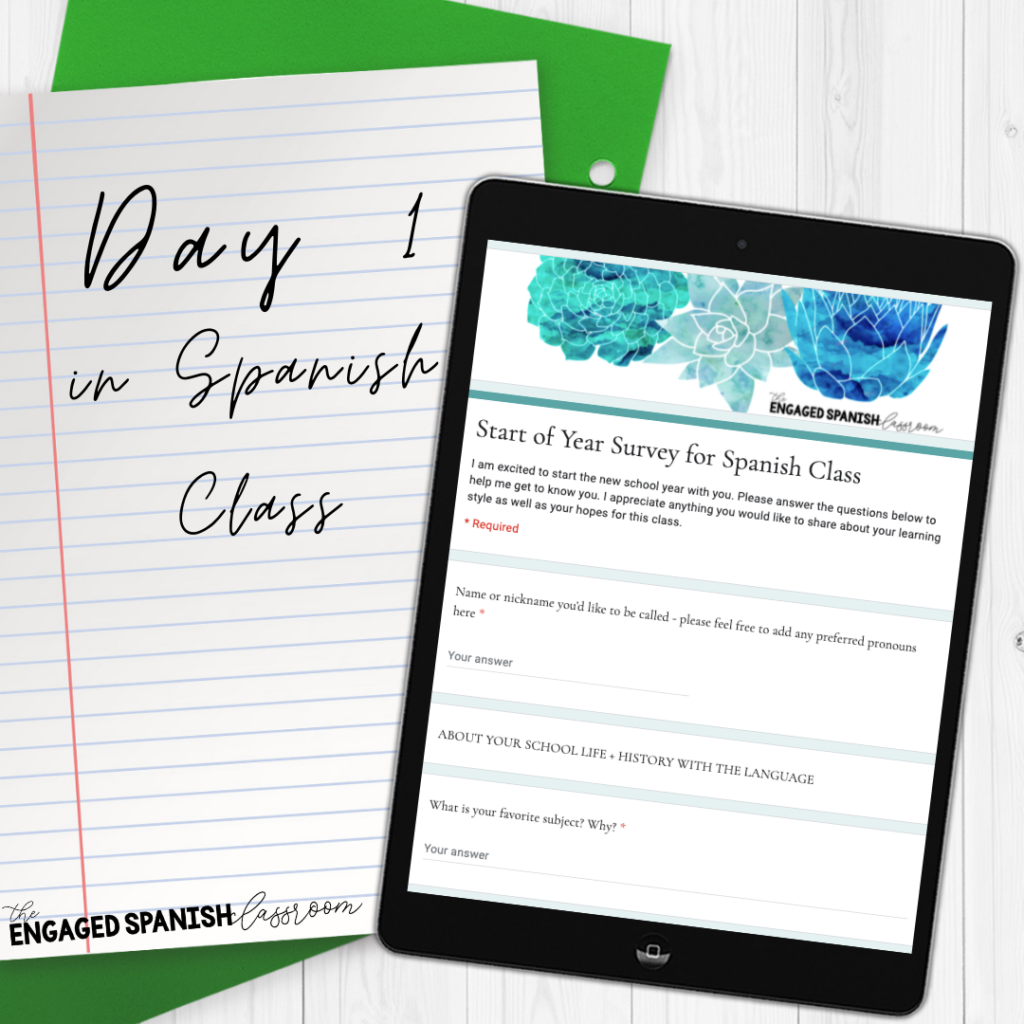
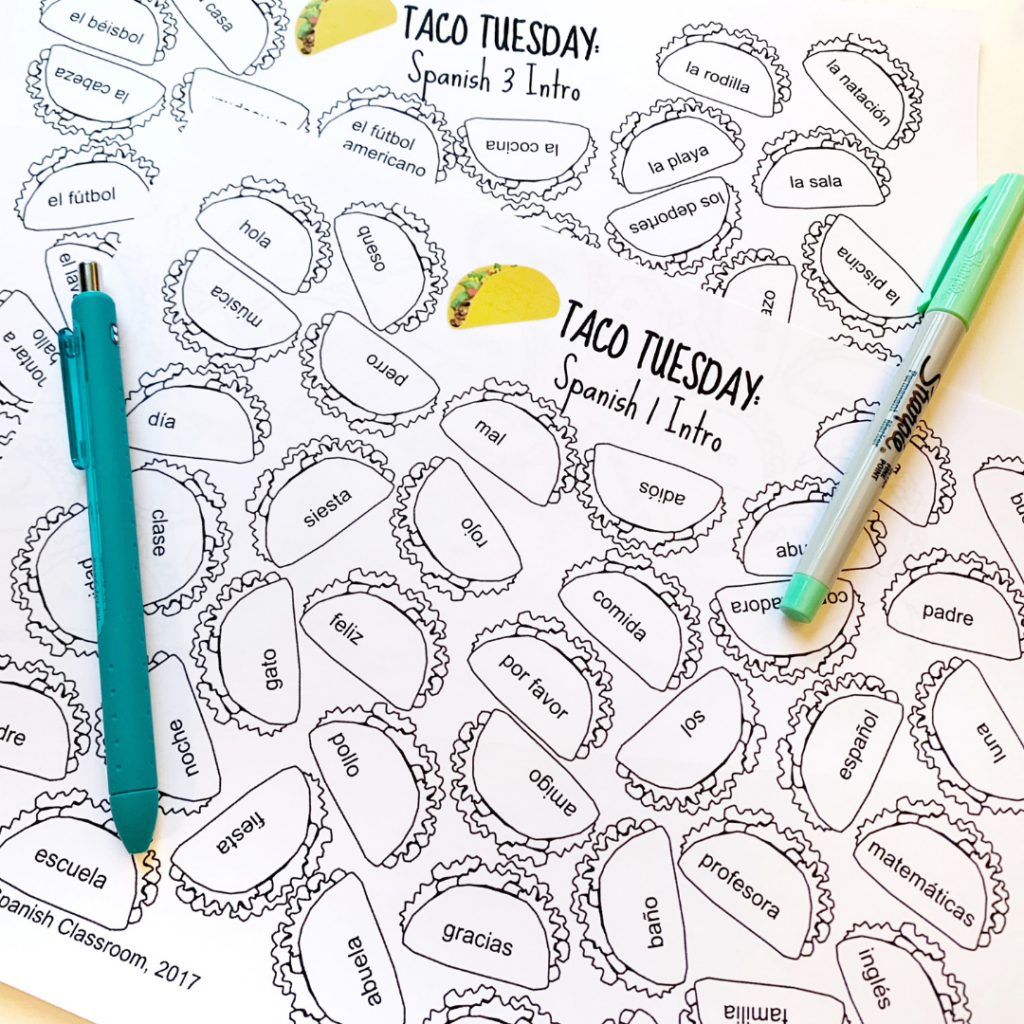
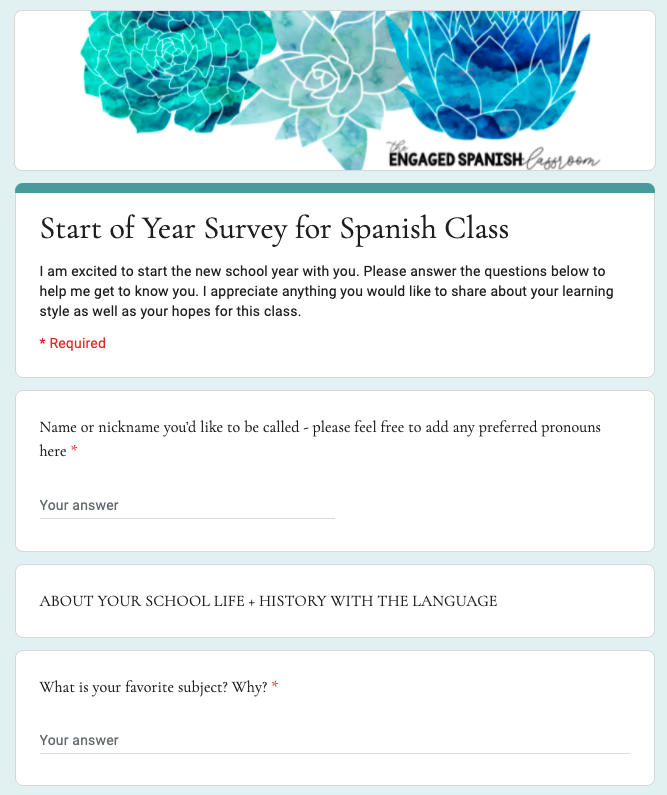


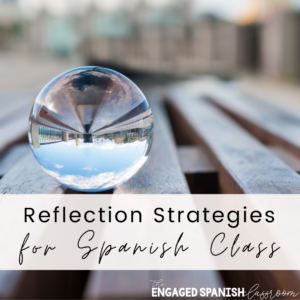
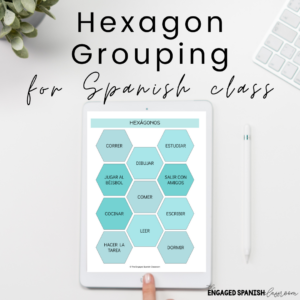


17 Comments
We head back for planning next week and students will be back on the 5th, so this post is perfect timing. I’m teaching Spanish 1 for the first time in a while and LOVE the idea of adding taco Tuesday into the beginning of the year routine. Thanks for the great ideas!
Quite informative. Thank you for taking the time to write this. I love that song as well. I will definitely be bookmarking this for future use. Happy planning to you too 😉
Taco Tuesday is one of my Go-Tos all year round 🙂 Thank you for reading and have a great year! 🙂
Thank you for reading! And it is such a great and powerful song 🙂 Have a great year!!
This is great!! Thank you so much for sharing. I will for sure include a lot of this in my 1st day. I will be teaching Spanish 1. I will start with the brainstorm and then continue with the taco Tuesday. I also do seating charts on the 1st day. I then do it again on the 1st day of the second week once schedules changes are no longer allowed.
I love Taco Tuesday! I'm excited you have them created for Day 1! Thank you! Also, great post! It's so helpful to hear what doesn't work for people, too, rather than just what does.
P.S. I don't like "clock partners" either! 🙂 Thanks, again!
Thank you for reading!! I'm so glad you found it helpful. And I'm glad you found my intro versions of Taco Tuesday! 🙂
That's so smart — there's always lots of changes in schedules! I often let students adjust a bit after that time period settles. And I hope your Spanish 1s love Taco Tuesday, and realize that they ALREADY know lots of Spanish 😉 !
Great ideas and I agree wholeheartedly with your "un-ideas". I found the same results as you did. Thanks so much and have a great year!
I'm so glad I'm not alone! And thank you, you too 🙂
Great ideas. I love the idea of a cognates game to show them that they already know more than they realize, and I will definitely do the Que Vamos a Aprender brainstorm.
Thank you for all the resources. This is my first time teaching Spanish 1 and 2. I was wondering if I should use the “ustedes” or the “vosotros” form when addressing the students. I am originally from Spain. So, naturally we use vosotros, but I realize that in Latin America ustedes is the common form. I would really appreciate your input.
Thanks again.
I studied in the DR and so my language habits often defer to those cultural norms. I use ustedes, though I do teach my students about vosotros!
Thank you for sharing your tips and resources! Teaching and learning a new language will always be better with a healthy study group.
Thanks for the tips! I have followed you a lot of years now and still find tips I can and will use ( some things you simply forget to do, like first day seating plan). I love to work in small groups, but change classrooms every hour so….. This will be my last year before retiring so I am trying to take it easy by using all my games and assignments I made the last 23 years🫣 Greetings from The Netherlands, Susan